Have you ever heard about speed blindness?
Maybe your driving teacher has mentioned it? It is when you perception of your speed is not correct, usually happening when you are driving fast... Something else your driving teacher might have mentioned is to measure your speed relative to an object, like a tree or street lamp. Doing so won't give you your actual speed, but rather your speed relative to another object. (Please ignore the fact that cars have speedometer... completely forgot cars have that).
Karl: How is this relevant?
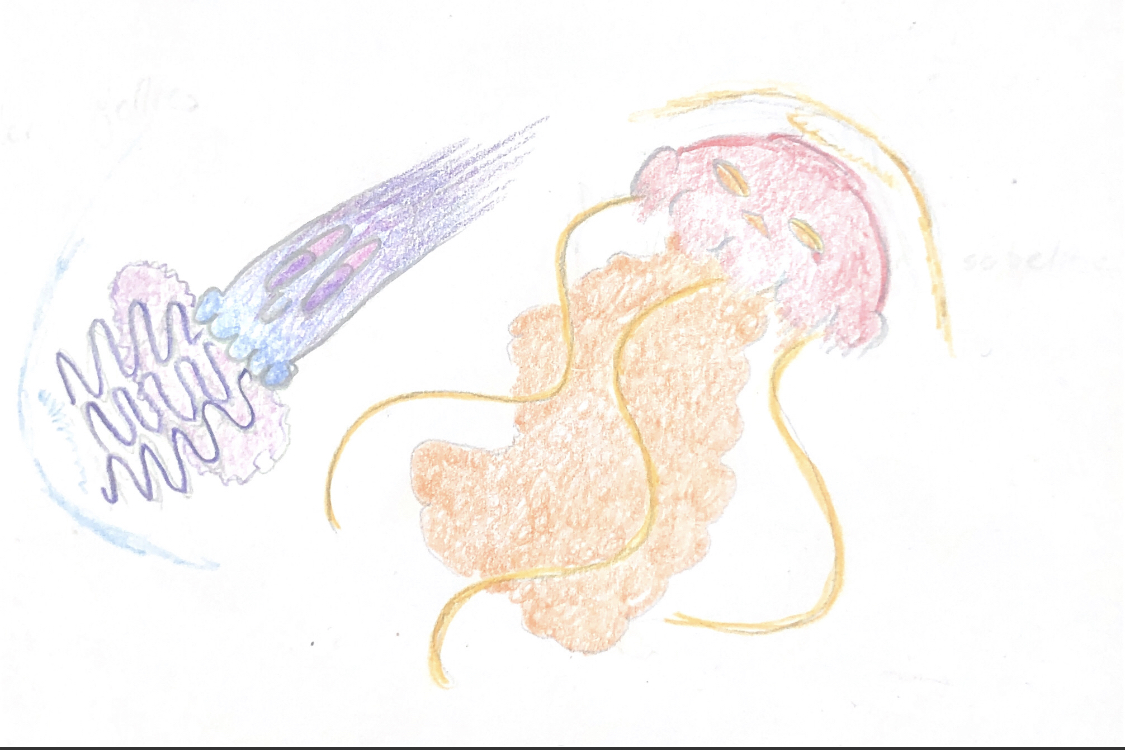
We can apply that same intuition to the part of our software which analyses velocity of our spacecraft. With such high velocity in space, in addition to everything around you moving with incredibly high velocity as well, speed blindness is inevitable.
For reference, the galaxy milky way (average spiral galaxy) spins at a speed of 210 km/s1!! 9450 times faster than a car on a Norwegian highway.
Let's take the tip from driving instructors: we'll use something in space to measure our spacecrafts relative speed to. What do we usually associate space with?
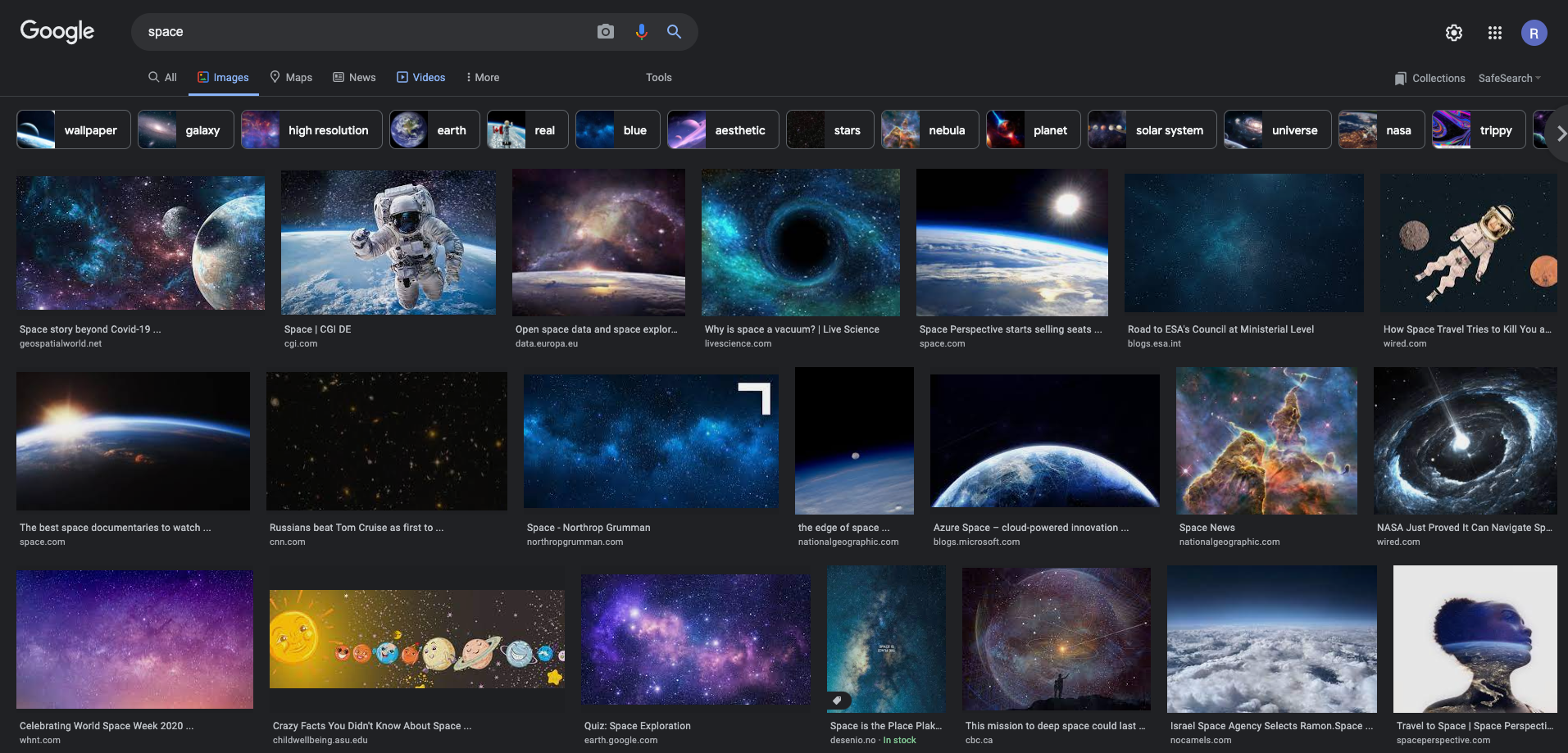
Answer: STARS! Stars are a good alternative since they can always be observed. More specifically distant stars. Since they are much more distant than distances in our solar system, we can assume they remain constant. This is obviously only an assumption and it makes our simulations easier.
Think of it like this, what is easier to compare your speed to? A tree or car in front of you?
(Ps. the answer is a tree which remains still.)
In order to do so, we need 2 reference stars. By using two different stars we will always be able to determine both x and y component of our spacecraft's velocity in respect to the sun. And what is the method used to do so?
Rebecca: BRING ON THE VERY CLASSIC HIGH SCHOOL EXAMPLE OF THE "BÆ BU BÆ BU"
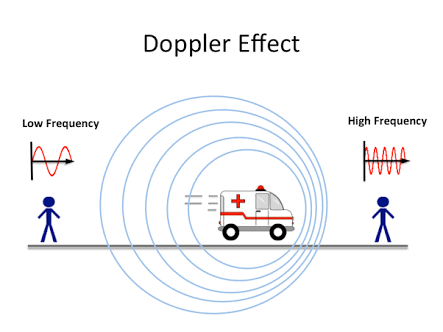
(comment: Jesus christ, I just realise the title of the image says doppler effect... Please ignore this as well. Tired jelly brain in tired jelly body.)
If you guessed doppler effect or doppler shift, you are correct! If you didn't remember, no worries. We will do a quick recap of it.
From high school we are usually taught about doppler shift through the ambulance siren example. Have you experience when an ambulance is driving towards the sound becomes more high pitched, but the moment it moves away from you the sound has a low pitch? The reasoning for that is blue-and-red shift, indicators of wavelength change and whether the object is moving away or towards you.
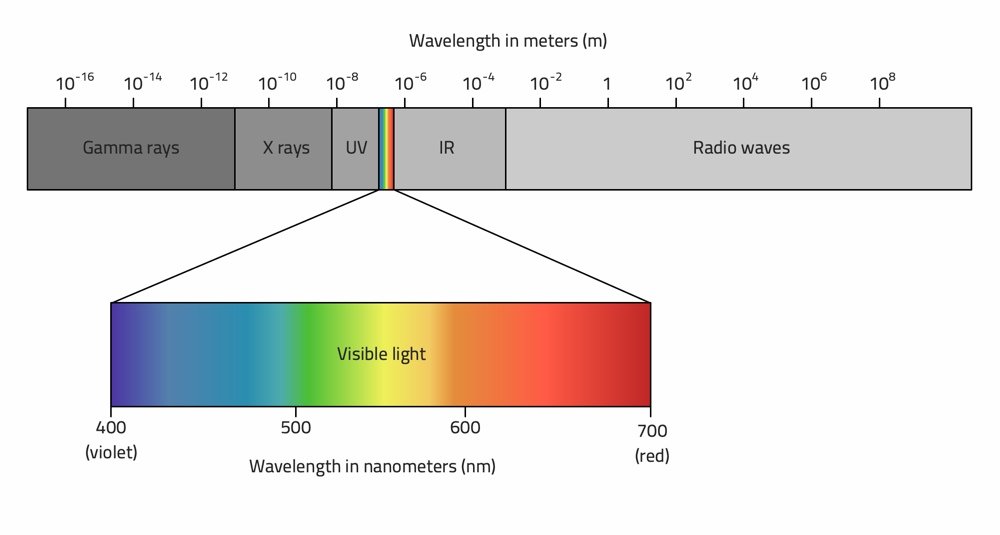
When the ambulance has a high pitch, the wavelength decreases and its moving towards the observer (right side of figure 4.10) also known as blue-shift, and vice versa for red shift meaning the ambulance has low pitch and is moving away from the observer (left side of figure 4.10).
Doppler shift can also be applied to light waves from stars. Negative wavelength would indicate a star moving towards you and positive wavelength is for a star moving away from you. By observing emitted light from our two reference stars, we can calculate our spacecraft's radial velocity using the equation:
\(\vec{v_r} = \frac{\lambda - \lambda_0}{\lambda_0}c = \frac{\Delta{\lambda}\cdot c}{\lambda}\)
\(c: \text{speed of light} \)
\( \lambda_0: \text{reference wavelength} \)
\( \Delta{\lambda}; \text{change in wavelength, } \lambda_{emitted}-\lambda_{observed} \)
In our case the reference wavelength of spectral line H\(\alpha\) is 656.3 nm.
Luckily for us we also just happen to know doppler shift of two stars as seen from Calcifer! This benefits us by allowing us to compare our spacecraft's velocity to Calcifer's velocity.
Rebecca: This seems quite easy then? Just use the formula and it spits out the velocity?
Karl: Not exactly. Weren't you a fan of transformers?
Rebecca: Yes?
Karl: Great, we need to talk about transformation instead :)
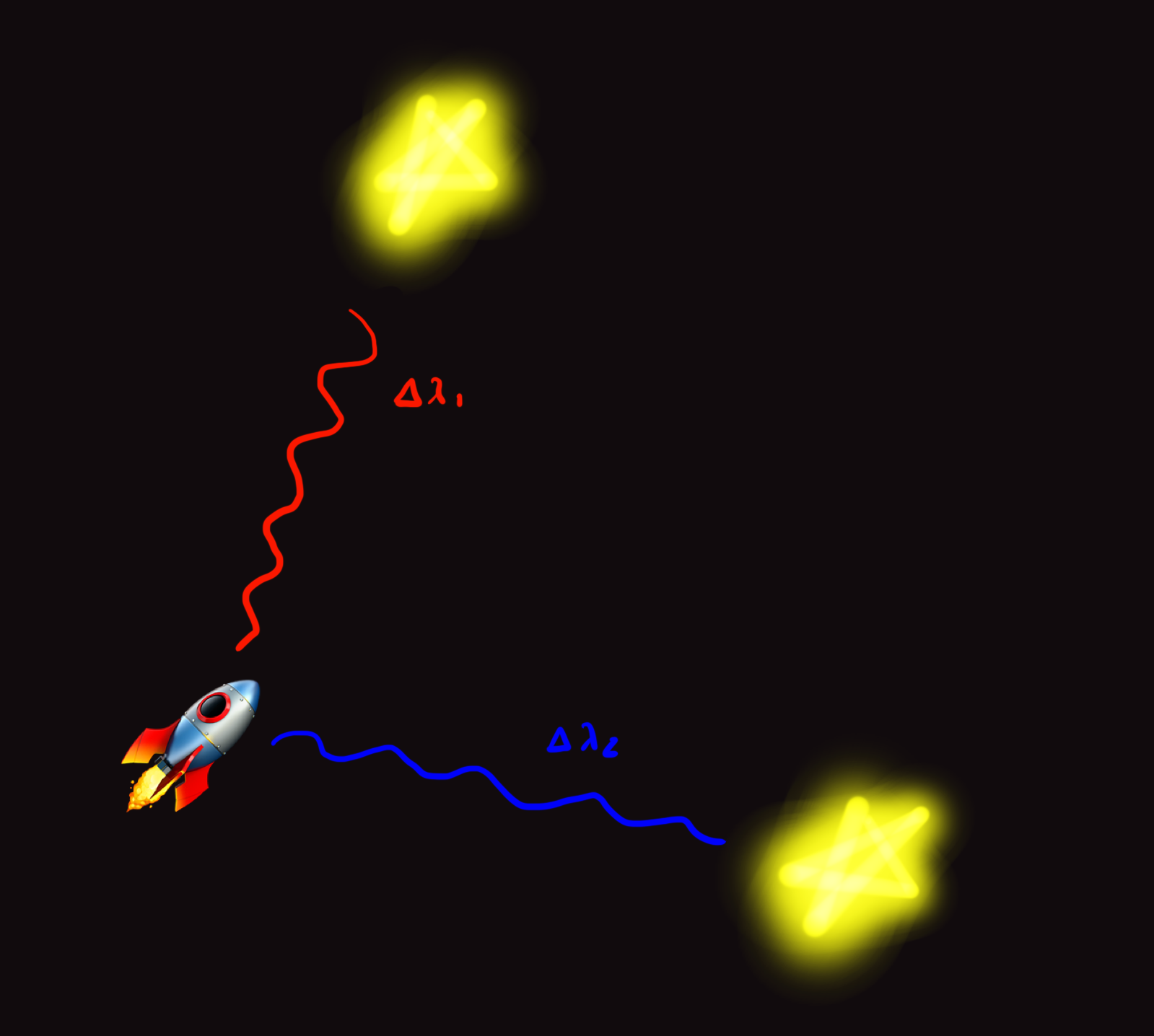
When observing light waves from two reference stars it might look something like this. The directions are given in unit vectors \(\vec{u_1} \text{ and } \vec{u_2}\)
with coordinates like
\(\phi_1\text{ and } \phi_2 \).
These coordinates are not easy to analyse and understand. We are used to a (x, y) coordinate system. We wish to therefore do a coordinate transformation from \((\vec{u_1}, \vec{u_2}) \rightarrow ({\vec{x}, \vec{y}})\).
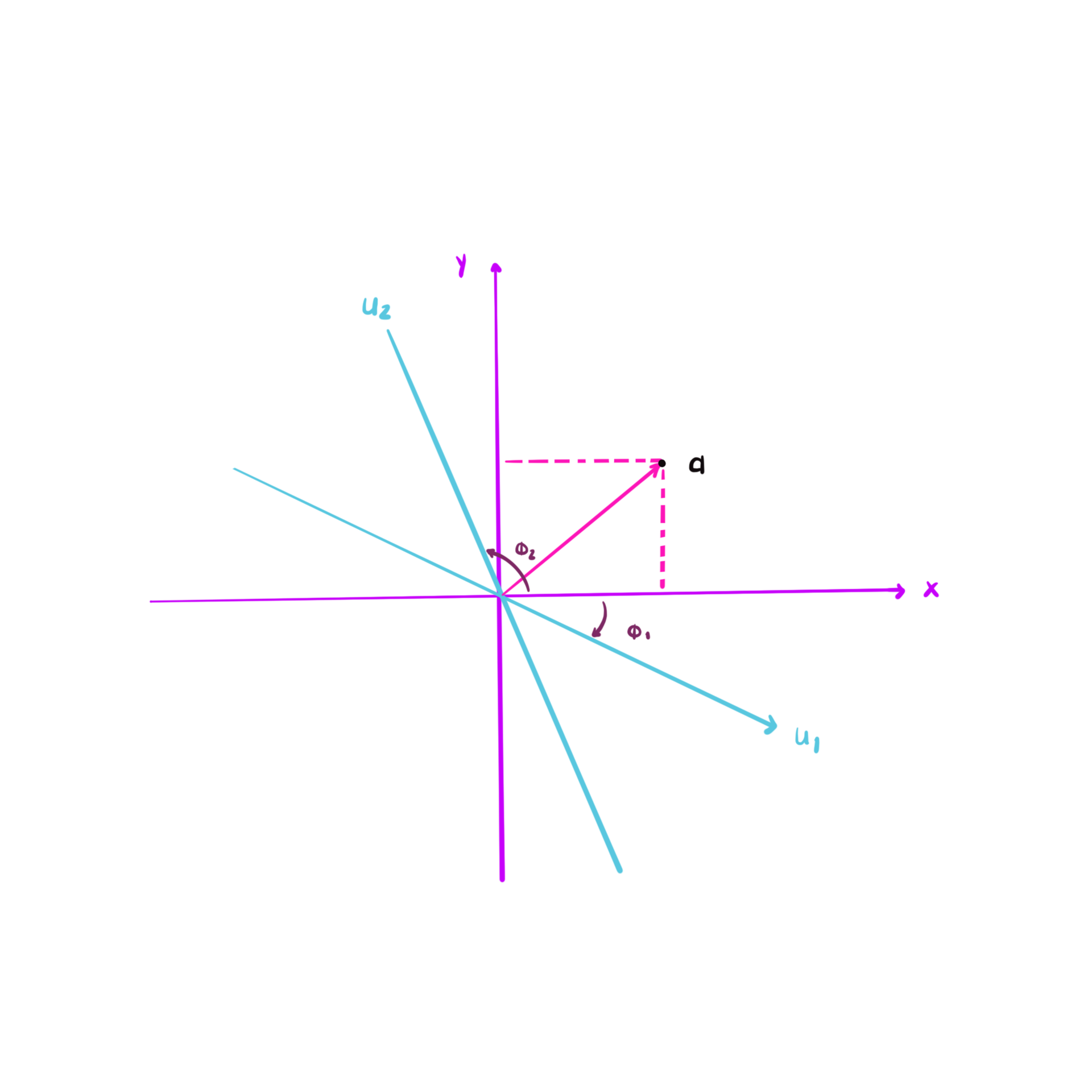
From our two reference stars we know their \(\phi_1\)and \(\phi_2\) coordinates, in addition to their doppler shift relative to the sun.
All we need to do is to use a coordinate transformation and we'll get the (x, y) velocity of our spacecraft
\(\text{transformation} = \frac{1}{sin(\phi_2-\phi_1)}\begin{pmatrix} sin(\phi_2) & -sin(\phi_2)\\ -cos(\phi_2) & cos(\phi_1) \end{pmatrix}\)
Yes, you are probably thinking where the fuck did that come from? From here :) Enjoy
With that being said. All we need are the two stars, in order to calculate our spacecraft's velocity with respect to our star. From there we can use doppler shift measured from star 1 and 2 to calculate the radial velocity.
Time to get numbers.

Note: AU per year is equivalent to travel from the earth to the sun in a year. In km/h it would be \((-33.12\cdot 10^3, 31,24\cdot 10^3)\), speedy boi.
Before I comment out our results. Let me mention the fact that our spacecraft's spectrograph measured \(\Delta\lambda = 0\) for both radial velocities of both stars in respect to our spacecraft. So the the velocity of our spacecraft relative to the stars will be:
\(\vec{v}_{spacecraft} = \frac{\Delta\lambda}{\lambda_0}c = 0\)
This can be calculated if we use the doppler shift from both stars as seen from our spacecraft in the equation for radial velocity (doppler equation) and transform the \((\phi_1, \phi_2)\) into (x, y) coordinates. The expected results are (0, 0) as velocity vector.

This makes comparing our velocity to Calcifer's velocity way easier. The consequence of what we mentioned above is that the velocity of the spacecraft relative to Calcifer equals the velocity of Calcifer relative to the reference stars!
\(\vec{v}_{spacecraft} = \vec{v}_{Calcifer} = (-1.93986, 1.82985) \text{ AU/yr} \approx (-33.12\cdot 10^3, 31.24\cdot10^3) \text{ km/h}\)
So the velocity of our spacecraft is the same as the radial velocity of our sun with respect to the reference stars!
How realistic is this??
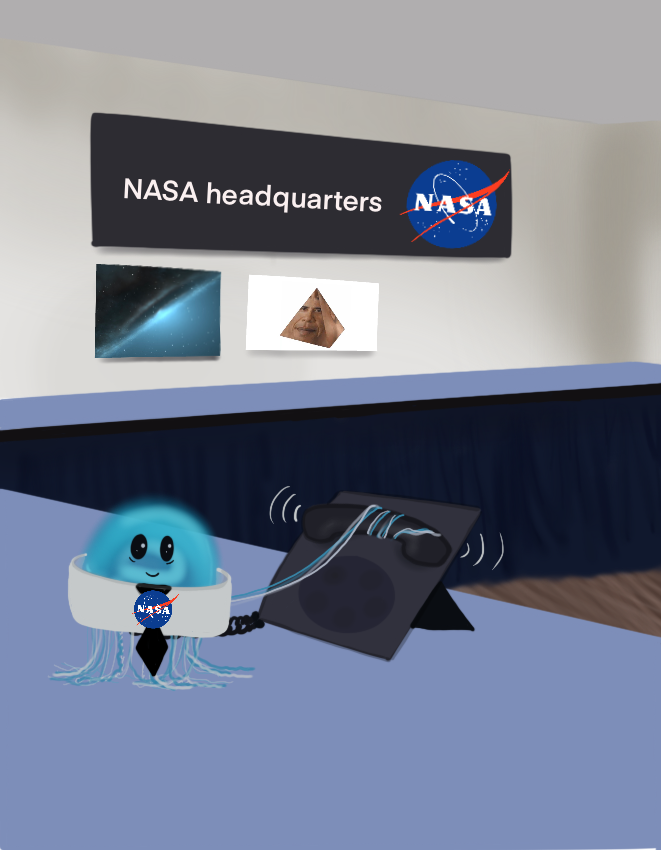
Rebecca and Karl: Hello? NASA?
NASA: Hello jellies. What may we help you with?
Rebecca and Karl: We have calculated a velocity for our spacecraft relative to 2 reference stars, which happens to be (-1.93986, 1.82985) AU/yr. Is this realistic?
NASA: Hmmm... let me pull up my calculator. (-1.93986, 1.82985) AU/yr would have a magnitude of 2.6667257714855452 AU/yr according to my calculator. So that's like 45540.696022262607585 km/h
Rebecca and Karl: FORTY FIVE THOUSAND FIVE HUNDRED AND FORTY KILOMETRES PER HOUR?!
NASA: A spacecraft leaving the surface of Earth, for example, needs to be going about 11 kilometers (7 miles) per second, or over 40,000 kilometers per hour (25,000 miles per hour), to enter orbit2. This seems realistic. Good job jellies!
Now, we're almost done with building our software!
1: Hubblesite.org [Retrieved: 10.10.21]
2: Nasa.gov [Retrieved: 12. 10. 21]
